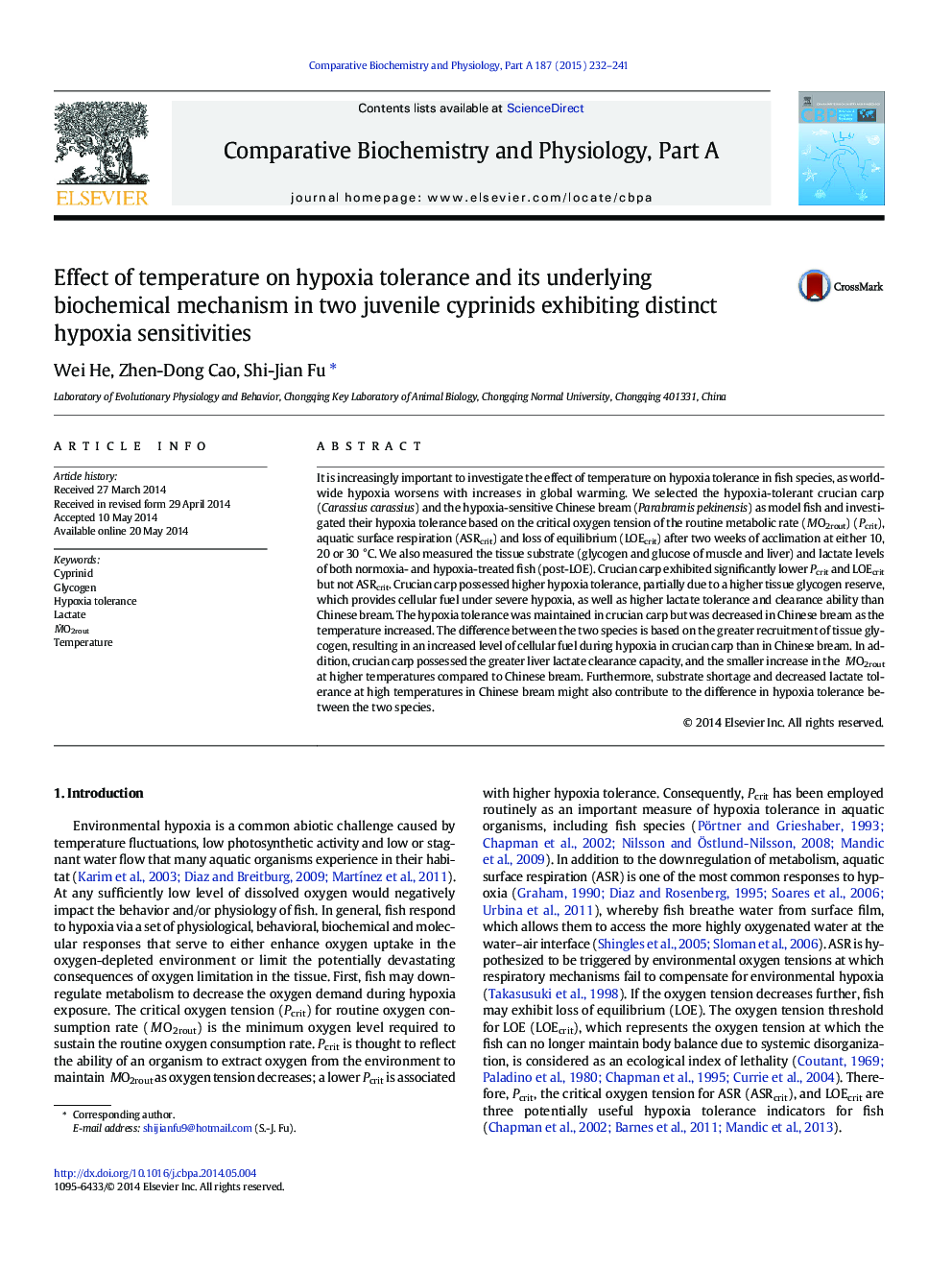| کد مقاله | کد نشریه | سال انتشار | مقاله انگلیسی | نسخه تمام متن |
|---|---|---|---|---|
| 1972038 | 1539000 | 2015 | 10 صفحه PDF | دانلود رایگان |
It is increasingly important to investigate the effect of temperature on hypoxia tolerance in fish species, as worldwide hypoxia worsens with increases in global warming. We selected the hypoxia-tolerant crucian carp (Carassius carassius) and the hypoxia-sensitive Chinese bream (Parabramis pekinensis ) as model fish and investigated their hypoxia tolerance based on the critical oxygen tension of the routine metabolic rate (M˙O2rout) (Pcrit), aquatic surface respiration (ASRcrit) and loss of equilibrium (LOEcrit) after two weeks of acclimation at either 10, 20 or 30 °C. We also measured the tissue substrate (glycogen and glucose of muscle and liver) and lactate levels of both normoxia- and hypoxia-treated fish (post-LOE). Crucian carp exhibited significantly lower Pcrit and LOEcrit but not ASRcrit. Crucian carp possessed higher hypoxia tolerance, partially due to a higher tissue glycogen reserve, which provides cellular fuel under severe hypoxia, as well as higher lactate tolerance and clearance ability than Chinese bream. The hypoxia tolerance was maintained in crucian carp but was decreased in Chinese bream as the temperature increased. The difference between the two species is based on the greater recruitment of tissue glycogen, resulting in an increased level of cellular fuel during hypoxia in crucian carp than in Chinese bream. In addition, crucian carp possessed the greater liver lactate clearance capacity, and the smaller increase in the M˙O2rout at higher temperatures compared to Chinese bream. Furthermore, substrate shortage and decreased lactate tolerance at high temperatures in Chinese bream might also contribute to the difference in hypoxia tolerance between the two species.
Journal: Comparative Biochemistry and Physiology Part A: Molecular & Integrative Physiology - Volume 187, September 2015, Pages 232–241
